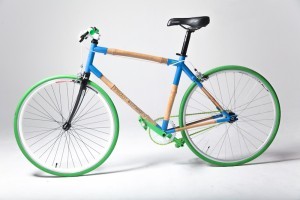Pedalling Forward Towards a Brighter Future
Established in 2012, Pedal Forward is a registered B-Corp bicycle company that is attempting to solve a social problem in addition to environmental problems. The key social issue that it is seeking to solve is a lack of access to adequate transportation in developing countries, which affects 70% of poor people around the world. As for the environment, designing bicycles with Iron Bamboo results in a lower carbon footprint than traditional metal bikes and gasoline-powered automobiles, especially in terms of manufacturing and maintenance. The company’s overarching mission is:
“to build sustainable bamboo bicycles that turn heads without breaking the bank, and reinvest a portion of [its] profits back into basic transportation needs of developing communities around the world.”
After raising enough capital via a Kickstarter Campaign just last week, Pedal Forward is finally ready to begin production in the United States and hopes to eventually increase its scale to serve developing countries and compete with lower quality, mass-produced bikes. When analyzing the customer solutions, costs and convenience associated with this product, I think that the bikes must be of high quality, have price parity with regular bikes, and be distributed by select retailers in order to be competitive. Pedal Forward seems to be addressing the idea of being “Great first, Green Second” by explaining the economic and product benefits of Iron Bamboo (ie. higher tensile strength than steel, 400% more shock absorbent that carbon fibre). In terms of the economy, the utilization of bamboo can stimulate the bike industries in developing countries (bamboo can be grown everywhere!) and increase employment opportunities in the long-run.
Originally, the founders were hoping to build a business model similar to Tom’s shoes “buy one, give one”. However, Pedal Forward realized that there were implicit costs associated with this model: “shipping bikes would disrupt the local markets in those developing countries and potentially hurt the livelihoods of existing independent bike dealers” (Covington, 2016). As a result, the company will reallocate 10% of revenue on each bike sold to partners in developing countries who already distribute bikes to beneficiaries in need (ie. students and farmers).
Since Pedal Forward is in its start-up stage, I think it is essential for the company to increase consumer awareness about its product. While using direct marketing via mail may be contradictory (bad for the environment), the use of PR and personal selling is essential. In the short term, it would be smart for the company to visit trade shows and actively engage in two-way communication with potential consumers through social media. Once sales begin to increase, Pedal Forward could dedicate a portion of its revenue towards sponsoring/hosting events that fit with its brand image or it could hire online brand advocates.
How could Pedal Forward improve in the future? With the idea of a circular economy taking hold, it is important for the company to consider a cradle-to-cradle bike design. Perhaps the bamboo and other materials could be repurposed at the end of the product life cycle or at the very least, the materials could be collected for disposal.



To quickly answer your question that’s the caption of the picture, yes I would buy that bike. As a huge biking advocate and someone who loves biking in the summer (though it gets pretty sad to bike any other time in Raincouver), This is an awesome example of great before green. Looking at their choice of material (bamboo) for the bike makes me wonder why people haven’t done this before! Well, at least if they can be held accountable for their words and they are trustworthy. They claim that bamboo is more shock-absorbent than carbon-fiber and has more tensile strength than steel. The inner hipster in me screams to have this bike.
However, there`s also a bit of me that`s skeptical, but only for a small reason .They claim that it has stronger ‘tensile strength’ than steel, but I feel like that’s just a buzz-word dropped in. Why would I ever need the material of a bike to withstand me pulling on it? This just very slightly hits their credibility a bit for me.